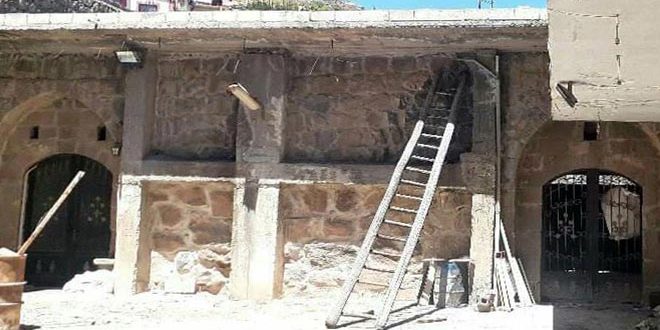The city of Salkhad in the southern countryside of Sweidaa contains several khans that go back to the Ayyubid era. These important archeological monuments embody the city’s economic development and prosperity in this period.
Head of Sweidaa Antiquities Directorate Nash’at Kiwan told SANA reporter that in the past these Khans were used as hotels, which indicate the prosperity of a city or a town. They also acted as trade centers that attract merchants and owners of capitals and provide them with a comfortable place to exchange ideas and as a place where intellectuals meet to exchange cultural ideas.
Kiwan made it clear that building the ancient Khans of Salkhad came in response to the stage this city entered during the Ayyubid kingdom era and the time of King Abu Bakr Ayyub Al-Adel. They were built on several stages during the era of Izz Al-Din Aybak due to the growing economic movement. Aybak wanted to document the date of building each of the four khans in the city of Salkhad on stones so as to leave a trace for the coming generations and document this period of the city’s history.
He indicated that these khans were intended to be used as facilities that contain the surplus of the city’s products and industries. Water pools and baths were built near these khans to provide services to travelers.
He pointed out that the first khan, the oldest one, was built in 1221 AD in the southwestern corner of the water pool, about 50 meters away from it, and its total area was more than 3,000 square meters. The second khan was built in 1225 AD, while the third was built in 1237 AD.
Hamda Mustafa

